
Establishing and Displaying a Daily Routine
Denise Rodaniche uses an organized sequence of small-group and center activities so that students know which group they are in and exactly where to go and what to do.
CREDITS Classroom Management
Classroom Management
Denise Rodaniche uses an organized sequence of small-group and center activities so that students know which group they are in and exactly where to go and what to do.
CREDITS
Candice Bookman talks about the effectiveness of Guided Reading in teaching reading, building comprehension skills and strategies, and scaffolding instruction for all readers—including struggling readers.
CREDITS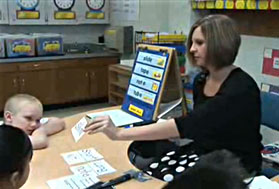
Candice Bookman discusses grouping students according to their needs.
CREDITS
Candice Bookman talks about teaching centers and center routines ahead of time to prepare students.
CREDITS
Wiley Blevins explains how Scholastic Guided Reading can supplement your comprehensive reading curriculum and provide teacher support to meet the needs of your students.
CREDITS
Wiley Blevins speaks about independent reading activities for students as a crucial part of classroom management.
CREDITS
Educators explain how the Scholastic Leveled Bookroom titles match the themes, skills, and topics in their curriculum.
CREDITS
Continuing the discussion, educators provide more pointers about using longer chapter books in their small groups.
CREDITS
Kindergarten teacher Kelli Sutton describes the ways in which the Scholastic Guided Reading Program can benefit children in kindergarten.
CREDITS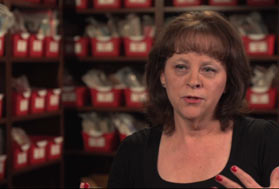
Administrators and teachers talk about the ways in which they implemented Guided Reading in their schools. They talk about the strategies they used, the challenges they faced, and their successes.
CREDITS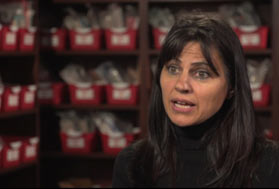
Educators provide tips and their proven methods for successful classroom and small group management.
CREDITS
Administrators and teachers continue to answer questions and share how they implemented Guided Reading in their districts, schools, and classrooms. They explain the impact on their students and teachers.
CREDITS
Administrators and teachers share the ways in which the Scholastic Leveled Bookroom is a valuable resource in their school, for both teachers and students.
CREDITS
Christine Gibbons organizes her classroom so that students know exactly what to do and are able to build reading strategies and stamina.
CREDITS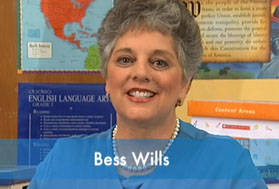
Bess Wills provides an overview of Scholastic Guided Reading program materials.
CREDITS
Denise Rodaniche demonstrates introducing text features, skills, and strategies for reading a book.
CREDITS
Wiley Blevins reviews the steps leading to a successful guided reading lesson.
CREDITS
Enrique Puig has students write their own stories using words from the text they have just read.
CREDITS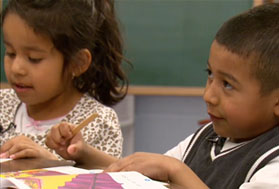
Jan Richardson demonstrates how to build emerging readers’ word recognition.
CREDITS
Jan Richardson helps children build fluency once they are skilled at one-to-one matching.
CREDITS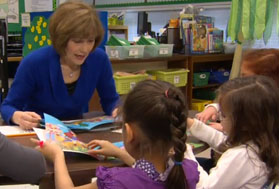
Jan Richardson helps children learn to identify a problem word and reread to find the correct word.
CREDITS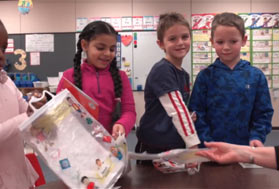
Daryl Troy encourages young children to think and talk about the key details in the book.
CREDITS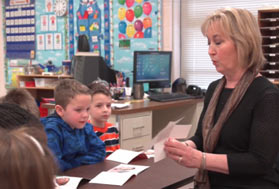
Daryl Troy transitions to the writing activity using prompts from the teaching card. She provides an activity of her own to gauge the group's comprehension of the text.
CREDITS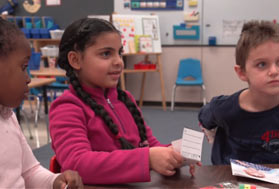
After children complete the writing activity, Daryl Troy has children share their writing with the group.
CREDITS
Kelli Sutton leads this advanced group of readers in discussions and reading for fluency.
CREDITS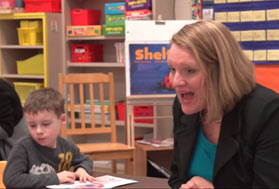
Kelli Sutton directs students to continually reference the text and make text-to-world connections.
CREDITS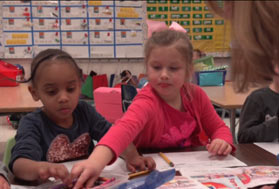
Kelli Sutton guides children to extend the meaning of Farm Helpers through writing.
CREDITS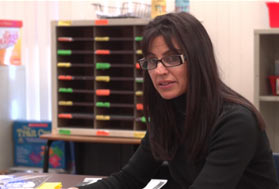
Stephanie Wrobel introduces students to a work of historical fiction. She uses prompts from the teaching card to introduce Academic Vocabulary She helps students use compare and contrast strategies.
CREDITS
As the lesson continues, Stephanie follows the prompts on the teaching card and alternates between reading and discussing the text and illustrations. She models fluency and checks student comprehension by observing how they compare and contrast.
CREDITS
Elizabeth Brindley uses the teaching card prompts and discusses features of informational text. She focuses on vocabulary as well as the suggested target skill, citing textual evidence.
CREDITS
While conferencing with students, Elizabeth Brindley prompts them to cite textual evidence and use context clues to understand the meaning of words.
CREDITS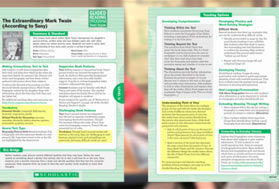
Using prompts from the teaching card, Jennifer Fosnight, has a deep discussion with fluent readers about the text they are reading by focusing on higher-level concepts involving vocabulary and unique points of view.
CREDITS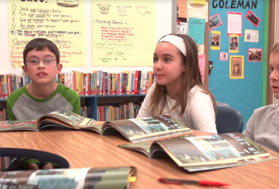
Continuing the lesson, Jennifer Fosnight engages students in using textual evidence to support the claims they make in their discussions.
CREDITS
Jan Richardson uses neurological impress to help struggling readers gain fluency.
CREDITS
Candice Bookman builds students’ comprehension skills by having them review their predictions and then summarize the story.
CREDITS
Students learn how to use end punctuation and how punctuation changes the meaning of a sentence and the way it is read.
CREDITS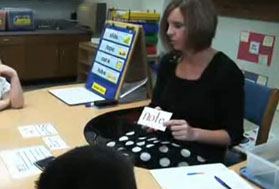
Candice Bookman reviews phonics and new words students will encounter as they get ready to read a new book.
CREDITS
Jan Richardson demonstrates introducing new (academic and domain-specific) words that students will encounter in the book before reading, so that they understand the meaning of words to build vocabulary and help them comprehend the book.
CREDITS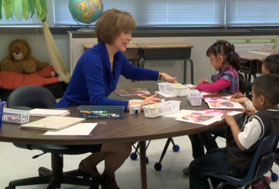
Jan Richardson familiarizes children with new words that will appear frequently in their texts, to increase automaticity and fluency.
CREDITS
Jan Richardson moves transitional readers into a deeper understanding of informational texts.
CREDITS
Francie Alexander speaks about evaluating your current materials to make sure you have a balance of informational text and literature.
CREDITS
Educators explain how Scholastic Guided Reading Programs work in the Common Core Classroom and how they align to the Common Core Standards.
CREDITS
Jan Richardson helps early readers learn to put words together to increase fluency and create a more natural phrasing as they read.
CREDITS
Jan Richardson has students change facts into questions to gain or improve understanding of informational text.
CREDITS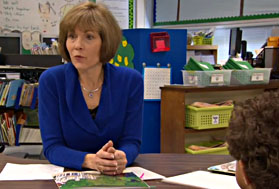
Jan Richardson helps students learn how to go beyond the text and make inferences.
CREDITS
This Teaching Tip tells teachers to identify the domain-specific vocabulary in a book and have students use those words to predict what the book will be about.
CREDITS
Francie Alexander discusses how best to align with the Common Core State Standards by engaging students in close reading and text-dependent questions that require students to go back inside a text.
CREDITSUse this chart with younger students to make notes as they read aloud to you. Older students may use this chart to write their own notes.
Use this checklist to note younger students' echo reading of your fluency model. Older students may use this checklist as a self-check or with a partner.
Distribute copies of this log for students to track their independent reading.
Distribute this survey to older students to fill out at the beginning of the year. Complete surveys for younger students by asking them questions during reading conferences. Revisit the survey with students at the end of the year to note changes.
Distribute copies of this log for older students to track what they read during guided reading or independent reading time. For younger students, use this log during conference times to record what they have read. Review and discuss periodically.
Use this 10-day management chart to help schedule your guided reading groups for two weeks.
Use this chart to plan times and activities for two small groups during a designated 60-minute reading block.
Use this chart to plan times and activities for two small groups during a designated 90-minute reading block.